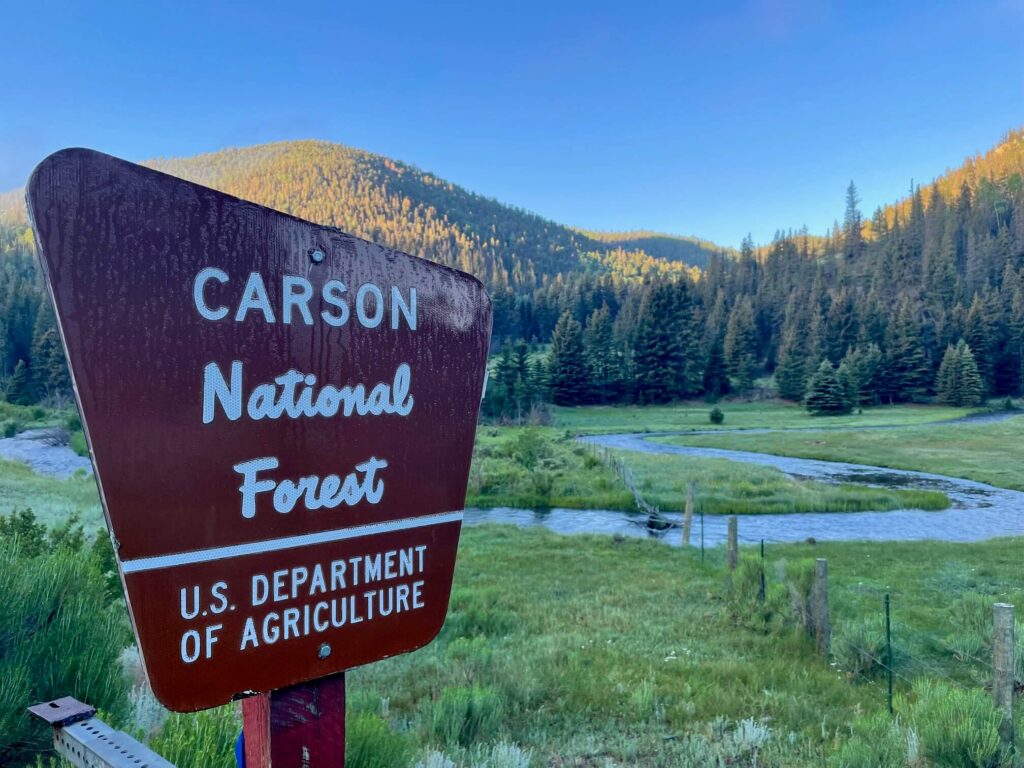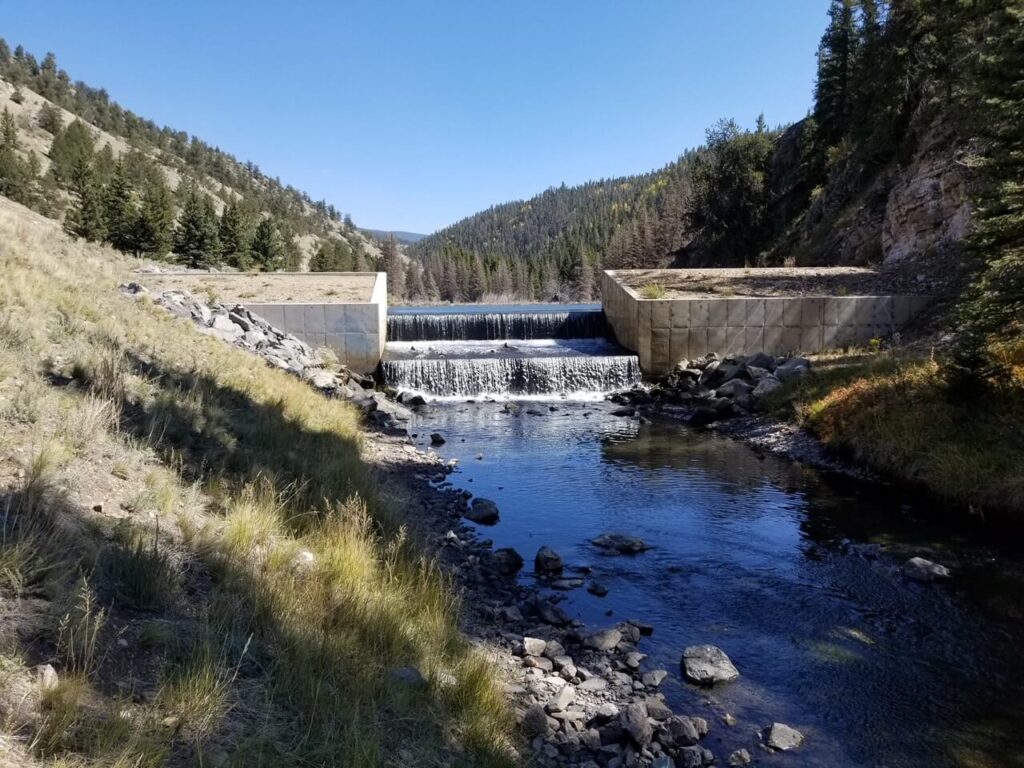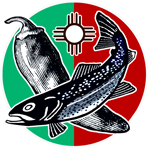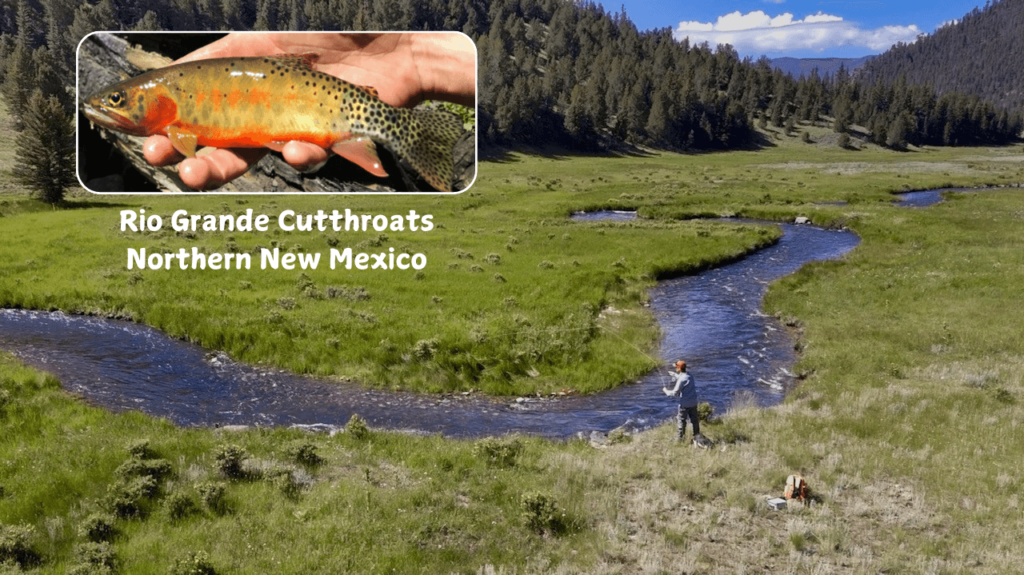About a year ago, I got word of a secluded mountain paradise in Northern New Mexico. The Valle Vidal is 102,000 pristine acres within the Carson National Forest known for abundant wildlife, spectacular scenery, and very low visitation. In addition to the largest elk herd in the southwest, the Valle Vidal is teeming with black bears, bobcats, mule deer, mountain lions, bald eagles, and the Rio Grande Cutthroat trout. It is one of the last best places to catch the New Mexico State Fish, thanks to a massive native trout recovery project. After months of anticipation, it was time to head south of the Colorado border to see if this place could live up to the expectations I had set for it.
Valle Vidal: The Yellowstone of the Southern Rockies
Picture a breathtaking expanse, framed by rugged mountain peaks, where nature’s beauty is on full display. The towering summits stand proudly against a backdrop of pastel skies. Vast, rolling meadows of emerald grass stretch beneath a sky that seemingly reaches to infinity. The soft murmur of a creek winds through the landscape, as crystal waters reflect the surrounding grandeur. Wildlife roams freely here, with elk grazing lazily in the distance. The scent of fresh earth and wildflowers fills the air, while a gentle breeze stirs the grass and whispers through the trees. The valley feels both timeless and alive, a perfect harmony between the natural world and the raw, untouched Rocky Mountain wilderness.

For travelers who have experienced the Lamar River Valley, scenes like these conjure memories of time spent in Yellowstone National Park. Now imagine all the grandeur of Yellowstone without the paved roads, traffic jams, or tourists. Welcome to New Mexico’s “Valley of Life”

Getting to the Valle Vidal
Coffee in hand, I open the door to my truck and note the time – 4:30 am. Cooper (the adventure beagle) eagerly hops in and curls up in his backseat hammock. A few minutes later we are heading south on I-25 under the veil of darkness. The plan is to sneak past the urban centers of Denver, and Colorado Springs seventy miles to the south, before the hustle and bustle of morning rush hour. When the rising sun begins to illuminate Pike’s Peak, it is now visible in the rearview. Our first mission accomplished – highway traffic avoided. About 40 minutes south of the Springs, Pueblo represents the last real signs of civilization. Soon, the prominent Spanish Peaks mark the horizon, and we turn off the interstate onto US 160 at Walsonburg. From here our drive morphs into small towns and the even smaller roads of southern Colorado. It is another 47 miles to Fort Garland where we turn south on CO 159.
Colorado 159 becomes NM 522 at the New Mexico border. If not for the paved road, the landscape here could be mistaken for the 1800’s before barbed wire transformed the American west. Vast, open rangelands fan out in all directions. There are very few signs of development. My eyes scan the horizon, eager for initial clues to the Valle Vidal’s remote beauty. Foothills give way to forested peaks as the Sangre de Cristo Mountains stand against a backdrop of blue skies and billowing clouds. The tiny town of Costilla, NM is the last chance for gas. It is here that we make our final turn onto NM 196. Just beyond town I spot the offices for the Rio Costillo Cooperative Livestock Association. The GPS suggests that the entrance to Rio Costillo Park, one of two possible camping options, is another 14 miles, so we press on. About 5.5 miles beyond town, pavement transitions to gravel. We parallel Costilla Creek, eventually entering a beautiful canyon.



Restoring New Mexico's State Fish
The Rio Grande Cutthroat Trout (Oncorhynchus clarkii virginalis) is the southernmost cutthroat subspecies and New Mexico’s State Fish. Like most cutthroat throughout the west, their population has been significantly reduced. As of 2024, estimates place the current Rio Grande Cutthroat distribution at only 12% of its historic range. Fortunately, Rio Grande Cutthroat are thriving in New Mexico’s Valle Vidal thanks to a 30 year recovery project. The Rio Costilla Native Fish Restoration Project has been described by the U.S. Fish & Wildlife Service as the largest native trout restoration in U.S. history. To date, 120 miles of streams, 10 lakes and one reservoir have been cleared of non-natives and repopulated with pure Rio Grande Cutthroat Trout.



The state of New Mexico should be commended for their recent commitment to protecting and restoring native fish. They really have gone all in starting with their hatcheries and stocking program. Since 2002, the Seven Springs Fish Hatchery has been exclusively raising Rio Grande Cutthroats.
New Mexico Special Trout Waters
The New Mexico Department of Game and Fish has three designations for Special Trout Waters. All streams flowing within the Valle Vidal are Red Chile Water – catch and release only. In addition anglers are limited to two flies (or lures) with single, barbless hooks.



If you come to fly fish the Valle Vidal, please respect the fish and the efforts that went into restoring them. Catch and release fishing requires a bit more thoughtfulness and care. Wet your hands before handling these living gems. Return them to the water quickly. Catching a beautiful Rio Grande Cutthroat in its native watershed may well be the highlight of your fishing adventures. Let’s make sure these wild treasures are here to stay!
Fishing New Mexico's Valle Vidal
Valle Vidal Camping
There are two Forest Service campgrounds located within the Valle Vidal. Unfortunately, neither campground has convenient access to the area’s trout streams. Cimarron Campground (32 sites) sits at an elevation of 9,300 feet and is the closest if entering the Carson National Forest from the west. To get to McCrystal Campground (55 sites) you drive another 10 miles on FR 1950. I never ventured this far, as my plan was to concentrate my fishing on Costilla Creek.

After entering the Carson National Forest, I drove 12 miles on gravels roads (FR 1950 to FR 1910) before seeing the sign for Cimarron. The drive to the campground is spectacular! It reminded me of Yellowstone’s Lamar Valley. I chose not to stay at Cimarron Campground for a couple of reasons.
Rio Costillo Park is ideal base camp for fishing the Valle Vidal. There are drive up campsites right on Costilla Creek. As I set up camp, fish were rising in several spots I chose one The park tentatively opens on May 1 and remains open through Labor Day. At first I questioned the $30/day overnight vehicle charge. That all changed after driving up to Cimarron Campground.


